#queerness in fairytales
Text
One very interesting to note when comparing the "literary" fairytales and the "folkloric" fairytales - the fairytales actually rewritten or entirely written by authors for a literate public versus the oral folktales and "countryside" or "simple folks" fairytales collected by folklorists.
The latter tend to be very conservative, the former much more progressive than you think. Or rather... when you've got crazy nationalist and xenophobes and discriminators of all kinds, they'll turn towards the "folkloric" fairytales - but when you want to research queer, society-questioning, gender-norms-breaking, eerily modern fairytales, you'll go with the literary fairytales rather.
Don't get me wrong, do NOT get me wrong - both kind of fairytales are usually very racist in one way or another because they are from ancient times. The Pentamerone, madame d'Aulnoy's fairytales and the brothers Grimm fairytales all are very not-Black-people-friendly and always depict having dark skin as being ugly, being wicked or being a laughingstock. Because they were written by Renaissance-era Italians and French people, and by 19th century German men, so casual racism is just there.
BUT... Folkloric countrysides tend to play the cards of the casual European racism, and the common antisemitism, and the ingrained misogynistic views, much more plainly, openly and directly, because they were literaly collected among the folks that thought that, among the common population with the "common" views of the time. For example in a lot of French folkloric fairytales (not reprinted for children today) the role of the ogre or the devil or the murder in the woods will often be "the Moor" or "the Mooress", because it was okay to depict Moors are humanoid, devilish monsters used to eat the flesh of Christian children. The casual racism and antisemitism in good handfuls of the Grimm fairytales also prove the point (NOT HANSEL AND GRETEL THOUGH! I think I made my point clear). And the same way, in the Grimm you have the absolute "heterosexual-happiness" structure that was reinforced by Disney movie and is the reason why people think fairytales are inherently homophobic.
However, when it comes to literary fairytales, you have an entirely different song. Because they were LITERARY works, and as with a lot of literature pieces, you often get more progressive things than you think. Everybody knows of Andersen's fairytales queerness today that make them beautiful allegories for things such as coming out of the closet or transitioning or living in an homophobic setting, but if we take less "modern" and "invented", more traditional fairytales, we can be in for quite a surprise...
Take the Italian fairytales classics - the Pentamerone and the Facetious Nights. These works were originally satirical and humoristic adult works. Crude satire, dark humor - they were basically the South Park of their time. Slapstick gore out of an Itchy and Scratchy show, very flowery insults the kind of which you except to come of a Brandon Rogers video, poop and piss everywhere (yet another common trait with Brandon Rogers video, in fact I realized the classic Italian literary fairytales have actually a LOT in common with Brandon's videos...), and lot of sexual innuendos and jokes involving the limits of what was accepted as tolerable (extra-marital affairs, homosexuality, incest, gerontophilia, zoophilia). This was one big crude joke where everybody got something for their money and everyone, no matter the skin color, the religion, the gender or the social status, got a nasty little caricature. It does come off as a result as massively racist, antisemitic, ageist and misogynistic tales today... But it also clearly calls out the bad treatment of women, and takes all kings for fools, and completely deconstructs the "prince charming" trope before it even existed because they're all horny brutes, and it encourages good people to actually go and KILL wicked people who abuse others and commit horrid deeds... These tales inherited the "medieval comedy style" of the Middle-Ages, where it was all about showing how everybody in the world is an asshole, all "goodness" and "purity" is just foolishness and hypocrisy, how the world is just sex and feces, and how everybody ended up beaten up in the end.. (See the Reynard the Fox stories for example - which themselves spawned an entire category of "animal fairytales" listed alongside traditional "magical fairytales" in the Aarne-Thompson Catalogue.
But what about the French classical literary fairytales? Charles Perrault, and madame d'Aulnoy, and all the other "précieuses" and salon fairytale authors - mademoiselle Lhéritier, madame de Murat, the knight of Mailly, Catherine Bernard, etc etc...
The common opinion that was held by everyone, France included, for a very long tale, was that their fairytales were the "sweet and saccharine-crap and ridiculous-romance" type of fairytales. They were the basis of several Disney movies afterall, and created many of the stereotyped fairytale cliches (such as the knight in shiny armor saving a damsel in distress). People accused these authors - delicate and elegant fashionable women, upper-class people close to the royal court and part of the luxurious and vain world of Versailles, "proper" intellectuals more concerned with finding poetic metaphors and correct phrasing - they were accused of removing the truth, the power, the darkness, the heart of the "original" folkloric fairytales to dilute them into a syrupy and childish bedtime story.
But the truth is - a truth that fairytale authorities and students are rediscovering since a dozen of years now, and that is quite obvious when you actually take time to LEARN about the context of these fairytales and actually read them as literary products - that they are much more complex and progressive than you could think of. Or rather... subversive. This is a word that reoccurs very often with French fairytales studies recently: these tales are subversive. Indeed on the outside these fairytales look like everything I described above... But that's because people look at them with modern expectations, and forget that A) fairytales were generally discredited and disregarded as a "useless, pointless child-game" by the intellectuals of the time, despite it being a true craze among bookish circles and B) the authors had to deal with censorship, royal and state censorship. As a result, they had to be sly and discreet, and hide clues between the lines, and enigmas to be solved with a specific context, and references obscure to one not in the known - these tales are PACKED with internal jokes only other fairytale authors of the time could get.
These fairytales were mostly written by women. This in itself was something GRANDIOSE because remember that in the 17th century France, women writing books or novels or even short stories was seen as something indecent - women weren't even supposed to be educated or to read "serious stuff" else their brain might fry or something. Fairytales were a true outlet for women to epxress their literary sensibilities and social messages - since they were allowed to take part in this "game" and nobody bothered looking too deep into "naive stories about whimsical things like fairies and other stupid romances".
But then here's the twist... When you look at the lie of the various fairytale authors (or authoresses) oh boy! Do you get a surprise. They were bad girls, naughty girls (and naughty boys too). They were "upper-class, delicate, refined people of the salons" true. But they were not part of the high-aristocracy, they usually were just middle or low nobility or not even true nobility but grand bourgeois or administrative nobility - and they had VERY interesting lives. Some of them went to prison. Others were exiled - or went into exile to not be arrested. You had people who were persecuted for sharing vies opposing the current politico-status of France ; you had women who had to live through very hard and traumatic events (most commonly very bad child marriages, or tragic death of their kids). And a lot of them had some crazy stories to tell...
Just take madame d'Aulnoy. Often discredited as the symbol of the "unreadable, badly-aged, naive, bloated with romance, uninteresting fairytale", and erased in favor of Perrault's shorter, darker, more "folkloric" tales - and that despite madame d'Aulnoy being the mother of the French fairytale genre, the one that got the name "fairytale" to exist in the first place, and being even more popular than Perrault up until the 19th century. Imagine this so called "precious, delicate, too-refined and too-romantic middled aged woman in her salon"... And know that she was forced into a marriage with an alcoholic, abusive old man when she as just a teenager, that things got so bad she had to conspire with family members of her (and some male friends, maybe lovers, can't recall right now) to accuse her husband of a murder so he would get death sentence - but the conspiracy backfired, madame d'Aulnoy's friends got sentenced to death, and she had to exile herself it her mother in England to not get caught too. And she only returned to France and became known as a fairytale writer there after many decades of exile in other European countries the time the case got settled down. Oh, and when escaping France's justice she even had to hide under the frontsteps of a church. Yep.
Now I am reciting it all out of memory, I might get some details wrong, but the key thing is: madame d'Aulnoy was a woman with a crazy criminal life, and in fact she got such a reputaton of a "woman of debauchery" the British people reinvented her and her fairytales around the folk/fairytale figure of Mother Bunch (Madame d'Aulnoy's fairytales became "Mother Bunch" fairytales in England to match Perrault's "Mother Goose" fairytales, and Mother Bunch was previously in England a stereotype associated with the old wise woman, kind of witchy, that girls of the village went to to get love potions and aphrodisiacs or some advice on what to do once in bed with a guy - think fo Nanny Ogg from Discworld).
And many other fairytale authors of this "classical era of fairytales" had just as interesting, wild or marginal lives. The result? When you look at their tales you find... numerous situations where a character has to dress up and pass off as the opposite gender, resulting in many gender-confusing emotion and situations just as queer as Shakespeare's Twelfth Night. Several suspiciously close and intimate friendships between two girls or two men. Various dark jokes at all the vices and corruption underlying in the "good society". Discreet sexual references hinting that there's more than is told about those idyllic romances. And lots of disguised criticism of the monarchic government and the gender politics of the society of their time - kings being depicted as villains or fools, princes either being villains or behaving very wrongly towards women, many of the typical fairytale love stories ending in tragedies (yes there's a lot of those fairytales where, because a prince loved a princess, they both died), numerous courtly depictions of rape and forced and abusive marriages, and of course - supreme subversion of all subversions - people of lower class ending up at the same level as kings (Puss in Boots' moral is that all you need to be a prince is just to look the part), and other mixed-class marriages (which was the great terror of the old nobility of France, for whom it was impossible to marry below their rank - if a king married a common peasant girl, the Apocalypse would arrive and it was the End of times).
So yeah, all of that to say... All the literary fairytales I came across with had subversive or progressive elements to it ; and this is why they are generally so easier to adapt or re-adapt in more queer or democratic or feminist takes, because there's always seeds here and there, even though people do not see it obviously. Meanwhile folkloric fairytales tend to be much more conservative and reflective of past (or present) prejudices, but people tend to forget it because these stories simple format and shortness allows them to "break" into pieces more easily like Legos you rearrange.
All I'm going to say is that there's a reason wy the Nazis very easily re-used the Grimm brothers fairytales as part of their antisemitic and fascist propaganda ; and why Russian dictators like Putin also love using traditional Russian fairytales in their own propaganda, while you rarely see Italian or French political evils reuse Perrault, d'Aulnoy, Basile or Straparole fairytales.
#fairytale analysis#fairy tales#fairytales#literary fairytales#folkloric fairytales#french fairytales#madame d'aulnoy#d'aulnoy fairytales#brothers grimm#grimm#queerness in fairytales#subversion in fairytales#queer fairytales#racism in fairytales#antisemitism in fairytales#politics and fairytales
24 notes
·
View notes
Text
Do you love fairy tales? I want to hear from you!
EDIT: I will be closing the survey on November 9th! Thank you everyone who has participated!!!
My name is Ainjel Stephens and I am a PhD candidate in the Folklore department at Memorial University of Newfoundland. I am currently conducting a research project on fairy tales reception by queer-identifying individuals for my PhD dissertation under the supervision of Sarah Gordon. The purpose of this study is to learn how people who feel queer or identify as queer think about and respond to fairy tales.

Artist: Gustave Dore
If this sounds like a project you would be interested in participating in, then I invite you to take a short survey where you will be asked a few questions about who you are, as well as reflective questions about your thoughts and feelings on fairy tales, and if these tales are “queer.” It should only take about 10 minutes of your time to complete.
The survey asks if you would like to participate further with an interview with myself in order to discuss your thoughts and opinions on fairy tales. This interview will be a recorded hour-long interview through video conferencing platform Tauria or Webex. If you select yes, I will be in contact with you with further steps. If you select no, then that’s it! Thank you for participating.
To participate, you must be the age of majority and no younger than 19, have fairy tale knowledge in English, and identify with the term “queer.”
If you are interested, click the link below to participate in the anonymous survey.
If you have questions or want to chat further, you can contact me at [email protected] or through my inbox on my project blog, www.diamondsandtoads.tumblr.com/
If you know anyone who may be interested in participating in this study, please send this post along.
Thank you for reading!
The proposal for this research has been reviewed by the Interdisciplinary Committee on Ethics in Human Research and found to be in compliance with Memorial University’s ethics policy. If you have ethical concerns about the research, such as your rights as a participant, you may contact the Chairperson of the ICEHR at [email protected] or by telephone at 709-864-2861
#fairytales#fairy tale retelling#queer#lgbt#lgbtq community#beauty and the beast#cinderella#little red riding hood#charles perrault#grimms#grimm fairy tales#queer fairy tale#diamonds and toads#folklore#folktale#snow white#sleeping beauty#queer writers#queer community#lgbt community#the princesses#academia#queer fairytales
255 notes
·
View notes
Text
if you make a period drama or fairytale retelling with queer or trans characters but nothing especially 21st-century about it
and then call it "updated" or "modernized"
you owe every LGBT person $500
#lgbt#gay#queer#period drama#fairytale#queer history#we are not inherently modern!!!! we have always been here!!!!#you are contributing to the attitude that queer/trans people are A New Thing!!!!
561 notes
·
View notes
Text
Sapphic/Lesbian Fairytale Retelling Recommendations?
I've been on a fairytale/folklore retelling with a sapphic twist kick lately (mostly because I've been brainstorming a loose one for an OG project) and I was wondering if my dear and illustrious followers (and those who come across this post) may have recommendations they want to shout out.
So far, I've read:
Malice by Heather Walter (Sleeping Beauty),
Bitterthorn by Kat Dunn (Beauty and the Beast with some Sleeping Beauty),
The Dark Wife by Sarah Diemer (Persephone and Hades)
(those are the ones I can remember reading as of late)
I have The Misadventures of an Amateur Naturalist by Ceinwen Langley and Thorn by Anna Burke coming in the mail soon.
I definitely know there is more to read, but idk where to even start. Let me know if you guys have any suggestions!
Thanks! Stay safe and happy!
#lucidmagic reads books#book recs#book recommendations#lesbian books#sapphic books#fairytale retelling#sapphic book recs#lesbian book recs#queer books#lgbt books#sapphic romance#sapphic fairytale retellings
63 notes
·
View notes
Text
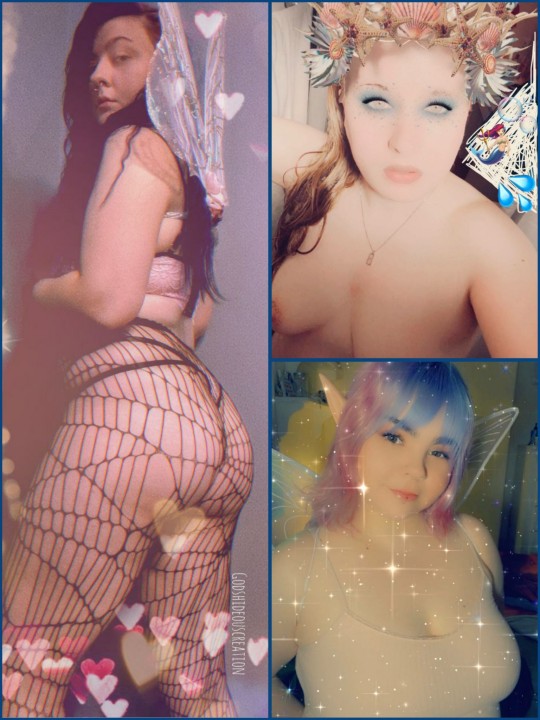
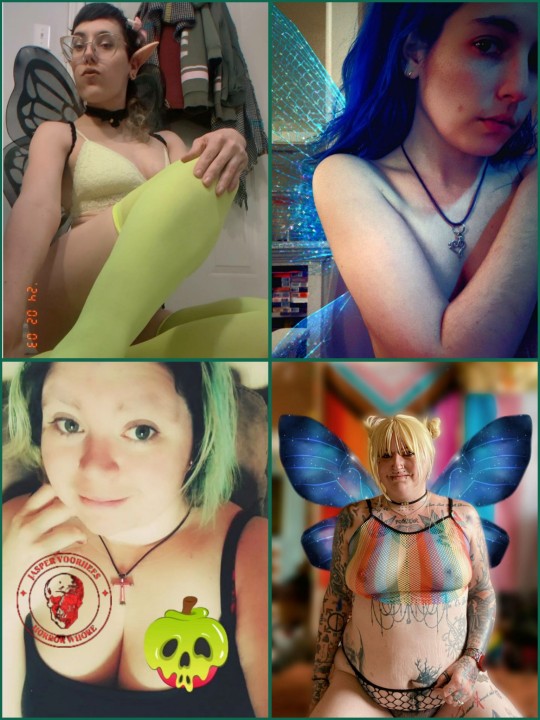
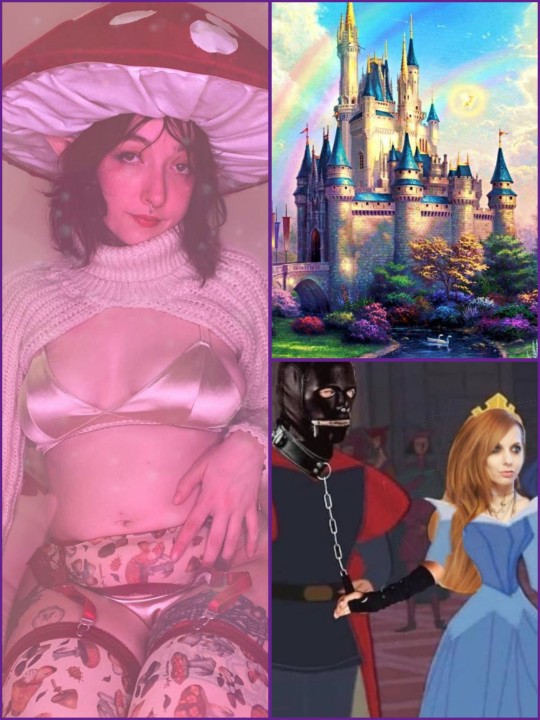
"In my thoughts and in my dreams
They're always in my mind
These songs of hobbits, dwarves and men
And elves
Come close your eyes
You can see them, too"
🏰🧚♀️👑🦄💫🏰🧚♀️👑🦄💫🏰🧚♀️👑🦄💫🏰🧚♀️👑🦄💫
some of your favorite sex workers came together for a v magical fairy tale day 💕 they were showered with gifts of love, praise & tippies from citizens of tumblrland...and they all lived happily ever after 🌈
@godshideouscreation • @kissesfromkenz • @weedstop • @mrsbigbootyminx • @blueberryheartache • @jaspervoorhees3 • @frankieglam • @thelusciouslibra • @burythecarnival
🏰🧚♀️👑🦄💫🏰🧚♀️👑🦄💫🏰🧚♀️👑🦄💫🏰🧚♀️👑🦄💫

#my tumblr family#fairytale day ✨#lgbtqia#collab#my favorites 💜#ridiculously attractive people#support content creators#support sex workers#queer#nonbinary#gay#the bard's song#blind guardian
43 notes
·
View notes
Text
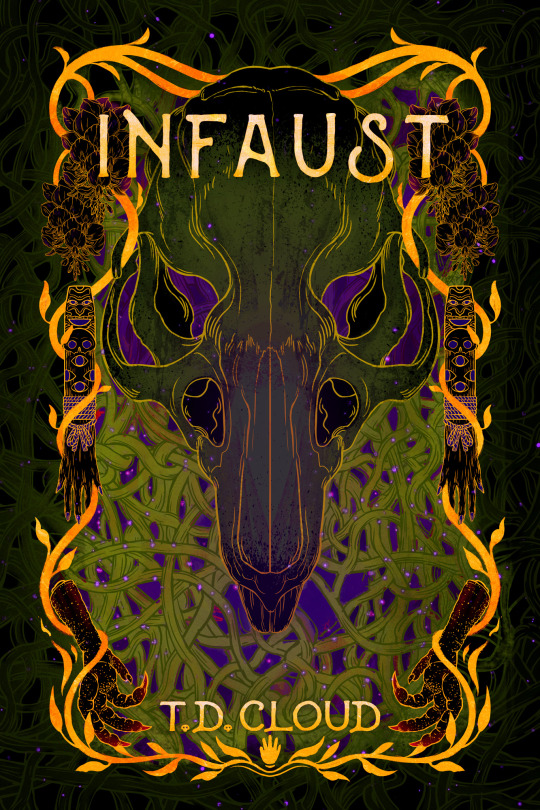
Happy Infaust cover reveal Friday! Give it up for @ambisun for another banger of a cover! But of course, this is only the beginning...
A witch with a dead familiar is an outlier and an ill-omen to every village they pass through. Rehan Nadir is one such witch. The only jobs available to him are terrible ones, and vagrancy is his only recourse… At least, it was until he heard tell of the town of Hamelin’s plight. Stories of a malicious entity, a chaos god, have tormented the village for hundreds of years, and like clockwork tragedy has struck once more: while the adults gathered elsewhere, the children were spirited away. No trace of them has been seen since. The town is desperate to bring them back. Very desperate.
Finding and returning the lost children would be just the thing to give Rehan a new chance at the life he lost after the death of his familiar, and if all it takes is killing a god of chaos, then he’s more than ready to take the plunge and open that door. Unfortunately, he just didn’t anticipate opening a few more in the midst of dealing the finishing blow.
More Info below!
Infaust is a dark romance recounting the tale of the witch Rehan Nadir and the elusive chaos god known only as the Piper. Trapped in a world where even the very dirt wants them dead, the two must depend on one another to escape—and along the way realize that perhaps the definition of a happily ever after really is a subjective one.
This is a story for those of us who know things can always get worse, that there's always still something left to lose. Infaust has been a very long time coming, starting as an initial concept idea back in 2018 and undergoing multiple rewrites over the years to bring it to the state it's in now. But with that long timeline comes bigger pay-offs. I'm incredibly proud of where this story has gone and all that it continues to develop into.
With that said...
This isn't the final cover.
I've had to delay this reveal once already, and nearly did so again last night. My cover artist is currently in the midst of an international move and her time is, as you can well imagine, limited. We thought we'd have the final cover done last night but alas, we had to prioritize elements to meet this deadline. The actual cover will look a little closer to this when it's all said and done.
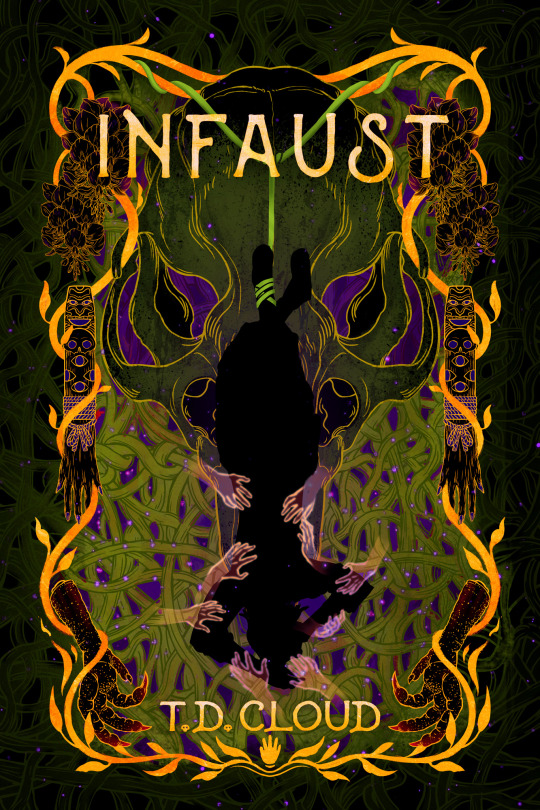
I don't have a solid date yet on when to expect this full version alongside the full spread. Our tenuous goal is April 10th, but moving to a different country isn't easy, simple, or fun. We'll have it by the time the book launches, so please be patient with us as we navigate this really bumpy timeline!
If you'd like to pre-order Infaust, you have a few options!
For Signed Paperback copies alongside a really cool, limited-run merch box bundle, please check out my Itchio: https://tdcloud.itch.io/infaust
For unsigned pre-orders, the Amazon sales page is the place to go for ebooks, with paperbacks coming closer to the launch date: https://amazon.com/dp/B0CRX5M7TX
Thank you so much for your support thus far and your excitement for Rehan's terrible, no-good dance with the Devil. It means the world, and I'm so excited to unleash this beast May 1st!
#infaust#cover reveal#indie author#folklore#fairytale#dark fairytale#dark romance#horror#queer#queer horror#update
34 notes
·
View notes
Text

#st-jinx-art#fairy#fairytale#fairy tale#spooky#spooky season#gay artists#gay fantasy art#gay art#gayart#gay fantasy#newblvotg#gay#queer#art#magic#the magicians#warlock#warlocks#fairy land
83 notes
·
View notes
Text

♡ 'Wonderling' ♡
HB pencil; coloured pencils; Sakura Gelly Roll glitter pens (silver & gold); 2023.
Original drawing available here.
#art#drawing#artists on tumblr#illustration#kawaii#cute#fairycore#dreamy#pastel aesthetic#deer#fawn#fairytale#fairy kei#rainbow#magical#butterfly#artists#female artists#queer artists#cute art#kawaii art#cute aesthetic#kawaii aesthetic#etsy
336 notes
·
View notes
Text
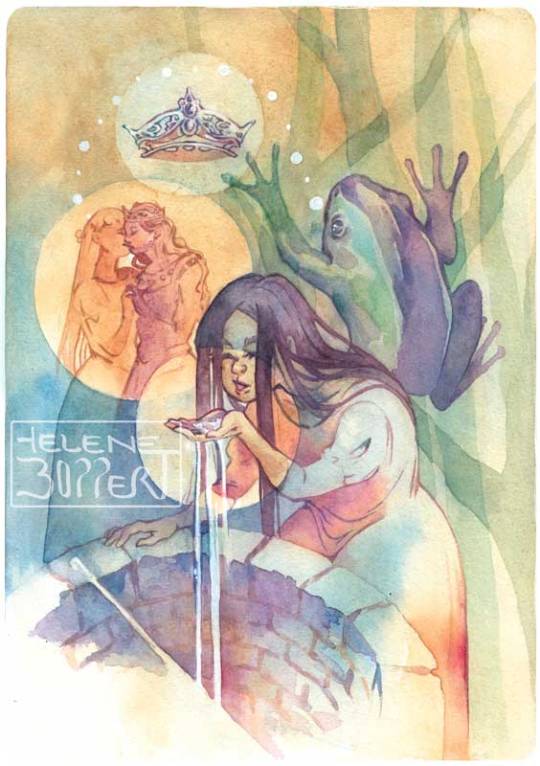
Illustration for Wain, written by Rachel Plummer and published by TheEmmaPress
Scottish folklore poems with an all lgbtq cast 🏳️🌈
If you want to find out which scottish folklore character this is... go on to read the book!
#artists on tumblr#my art#watercolor#illustration#lgbtq#diversity#gay#queer#lesbians#fairytale#folklore#mythology#working artist#stories#story illustration
53 notes
·
View notes
Text
A brief talk about Fables and LGBT
When it comes to works dealing with oe re-creating fairy tales, I always like to take a look at any possible LGBT representation. After all, fairytales became such a monolithic symbol of a heterosexual world with no place for queer people that taking a look at non "orthodox" orientations is always one of the easiest but also deepest subversions of the genre. (There's a whole thing to say about the very strong queerness of literary fairytales from madame de Murat and the knight of Mailly to Andersen and Oscar Wilde, but we'll keep this for later - let us focus on the "popular opinion" and "random Joe or Joane" knowledge that "fairytales are for heteros only").
As such, I had to take a look at the LGBT representations in the comic book "Fables". Being one of the big names and great example of fairytale media, building an entire franchise on reinventing fairytales into a modern fantasy and marking the first American entries into the urban-fantasy fairytale world... And it is very interesting because in recent years "Fables" has come under heavy criticism precisely because of a lack of LGBT representation. You have this numerous series, that spawned numerous spin-offs, and co-existed with other great Vertigo titles filled with queerness (Neil Gaiman's Sandman to take an example)... And yet all people remember of it are "heteros everywhere". Is it true? Is Fables truly as queer-unfriendly as we recall?
This post originally began last year as a catalogue of all the queer characters in Fables... But I stopped halfway, realizing I was exhausting myself by just dissecting every little part of the comic. Not that I do not enjoy it - but I have better things to do on my free time. So instead of making a full and exhaustive list of every mention of non-hetero things, I will rather make some broad and general observations based on my knowledge and reading of this franchise.
If we look at the main series, we can only confirm this popular opinion: homosexual characters are neither primary nor secondary - they are tertiary at most. The only character I remember to have been truly confirmed as homosexual was Moss Waterhouse from "Jack Be Nimble". A very cool character - an intelligent, ambitious, charismatic, slightly morally ambiguous Black, gay and Jewish man who knows he is every minority the old world hates and doesn't hesitate to use it as a weapon, and ultimately gets the fame, the wealth and the power. A very cool character... that lasts a few issues and disappears completely. Beyond that... What do we have? Rose-Red says she had "experiences" with women before - but it is a detail thrown hastily in a dialogue of "Animal Farm", and it is unclear if she is truly bisexual, simply "experimented" in her past, or purposefully had lesbian relationships in her conscious and intense effort to break all the social taboos of the Fables community... I did notice a hairdresser that seems to be a "gay hairdresser" stereotype in "The Sons of the Empire", but after that, the series is a desert.
So, while Bill Willingham recognizes gay people exist, he clearly doesn't want to focus on them or talk about gayness in his plots. In fact, he seems to have been thinking more about them in the beginning of his comic (all the mentions above are from the first third or so of the series), before completely focusing on something else. There is not a refusal of depicting homosexuals, no, there is simply no desire to focus on them or push them forward or tell stories about them (except for Moss Waterhouse, who is a focus-character and one of the main characters of the Jack Be Nimble arc - but a tertiary character in Fables as a whole). [Note: I am only looking at here through the lense of inside the comic, but it doesn't help that Willingham is in real-life an openly Christian and old-fashioned author with some... specific ideas that do not really fit with modern sensibilities, resulting in some of the series' primary controversies, like the handling of abortion.]
HOWEVER! To say Fables is not a gay comic FRANCHISE would be a big mistake. Because while the main series is a desert with one oasis, the spin-offs are BURSTING with gay characters! Well, it isn't a Pride Parade still, but we have prominent, important, front-stage homosexual characters, and gay romances are part of the plots and character growths!
"Fairest" is probably the most gay of all the spin-offs : in "The Hidden Kingdom", Rapunzel is confirmed to be bisexual and a key part of the plot is her romance with a female kitsune. In "The Return of the Maharaja" Prince Charming is revealed to be bisexual and Nathoo (of The Jungle Book) to be gay. And in "Clamour for Glamour" Mary is in an homosexual relationship too... Not only are homosexual relationships openly depicted and primary characters confirmed as queer, but the topic of accepting these relationships is also heavily talked about - from Rapunzel facing the rejecting of a feudal Japan moral system, to Nathoo being afraid of his own feelings and Charming having to explain to him they are normal. What is especially interesting about "Fairest" is that the series seems to go at counter-flow against the main series. For example, Prince Charming is confirmed to be bisexual and to have loved at least a man before... But if I recall well, in the beginning of "Fables" Charming made clear he was NOT into guys, only girls. Another case could be brought up - Crispin, whose "gay-coding" was massively amplified in "Of Men and Mice" - in fact, it is very obviously and strongly suggested by the story that Crispin and the Huntsman are more than friends, given how the Huntsman rushes by his side and refuses to leave his hospital bed after the explosion... It is not openly said, leading to Wikipedia articles to go with the usual routine of "They're just good friends", but the way it is framed and having this "very strong same-sex devotional friendship" sandwiched between openly gay romances, it all VERY strongly implies some homoromantic feelings...
Another spin-off that deserves a good place on this list, but that is not well known (because A- it is the last of the spin-offs and B- it got cancelled due to low sales) is "Everafter", which explicitely confirms that Connor Wolf, one of the children of Snow and Bigsby, is not just homosexual, not just bisexual, but PANSEXUAL thanks to his extensive shapeshifting abilities allowing him to turn into all kinds of sexes, genders and species. And this isn't just told to us by dialogue, but also explicitely proven and shown by having Connor enter an homosexual relationship with one of his male colleagues, Tom Swift (from the Tom Swift novels).
So, what made this "queer boom" in the spin-offs? Was it because Willingham was less present, if not completely absent, allowing other voices to write and speak? Was it because it was "side-stories" that could be split from the "main stuff", and thus there could be more experiments? Was it because these series were made and written in the late 2000s and early 2010s rather than the late 90s, and so these subjcts were more on people's minds? Probably a mix of all that - after all, one thing well known is that the spin-offs were places of free experiments and competitive alternatives, resulting in contradicting plotlines that made the series semi-canons compared to Willingham's main continuity (see the dual Sleeping Beauty origin backstory).
The Fables franchise is not "anti-gay", far from it - I do hold the idea that fairytales are an inherently queer genre and so every work dealing with them for too long ends up showing queer themes at one point or another - even though it is true that the Fables SERIES is very, if not almost exclusively, heterosexual-driven. But the very open and normalized homosexuality, bisexuality and pansexuality of the spin-offs help balance this in the scope of a franchise.
Now, you might say: "Hey, you spoke of queerness at the beginning of your post, but now you're all rambling about sexualities! Where's the transgenders at?". And believe me, it was deliberate! Here is the thing - when it comes to trans folks, Fables becomes a whole other lot of complex topic. I do not know what Willingham's personal opinions of trans people are, and it doesn't really matter here because am looking at the actual created work as it can be received from someone with no knowledge of the author. Here's the thing: while the Fables main series is a desert of gayness, it develops a very strong transgender esotericism through focus on specific fairytale topics, reversal of fairytale tropes, and discussion of motifs that truly work as gender-breaking occultism. This is why anyone who reads some arcs of the main series can easily believe Willingham is trans-friendly (again I don't know if he actually IS, and from the rumors I vaguely heard, he might not be fully okay with trans people, but his work speaks a different language). If Willingham truly is against trans people, than this proves my point above: anyone dealing too much or for too long with fairytales in their work will grow queer-messages and queer-themes, that they want it or not.
On one side, you have numerous shapeshifters in this story who explicitely keep altering and changing their appearances and identities, which brings forward questions of "living into two worlds" (like the cubs, halfway between humans and wolves) or having to choose one identity other another. When this gets mingled with inhuman, cosmic entities and personified natural powers this results to some very interesting gender issues - most famous being the North Wind case. When there is talks of the North Wind getting an heir among his grandchildren, there is a whole discussion about how the North Wind will always be King of the North and of Winter... even if the new North Wind is a girl. Which, as the North Wind attendants say, lets the heir choose if they want to become male to match the title, or stay female while being called "King" - because ultimately the North Wind, being a seasonal and weather power, is above and beyond these gender considerations, and mostly uses them as attributes and titles more than anything of real substance.
On the other side, the topic of names is truly fascinating... Fables being iconic characters of popular stories, feeding off their fame and celebrity to gain power, means that they are deeply attached to their names, that their names are their essence and their being, and that these same names will keep haunting them. And yet... in the second half of the comic, we have numerous characters changing their names. Changes that not only mark deep personal growths and dvelopments, but also are accepted by others and change the perceptions of who the character is. When Flycatcher stops being a low janitor in deny, and decides to become a brave, powerful, messianic king, he returns to his original name of "Ambrose". Similarly, Frau Totenkinder when returning to her true self, abandoning the nicknames and disguises, gains a new identity so that the other Fables do not recognize her and mistake her for another person. And of course, there is how Stinky - who got a name he hated, not by choice - becomes Brock Blueheart, though this is here meant to be more of a religious allegory than anything else. But still - for anyone aware of his transgenderism works, to see this importance and focus on the power of names, of names as defining an identity, and of the changing of names to change who you are... It is hard not to see some trans motifs in the second part of the Fables comics.
But even more relevant, even more obvious, even more trans-coded, was the story of Rodney and June. This arc was the definitive proof that no matter what Willingham's personal opinions might be, Fables was a trans-friendly comic, even if maybe against the author's own intentions, or by accident. [Or again, purposefully if Willingham turns out to be cool with transgenders people, I don't know the guy]. Rodney and June, wood-soldiers, born out of trees, made of wood, part of an entire elite nation and civilization of wooden people... Are fascinated by people of flesh, dream of becoming flesh people, even if others see them as weird freaks and advise them to "keep all this hidden" not to compromise their reputation ; and their story is fully developed and fleshed out (no pun intended) from awkward and failed attempts at imitating and understanding the behavior of flesh-people (things like eating or kissing), to them openly and bravely undergoing a quest to demand that their creator grants their wish of becoming people of flesh, and be recognized as such by the empire they live in... When you read this story, it seems massively obvious that this is a barely-veiled plot for anyone dealing with identity issues and trying to change who they currently are to be true to who they want to be - and more importantly who they feel they have to be. You can't do more trans than that - from the whole "don't tell, keep it hidden" behavior of the awkward friends around you to the secret experiments and roleplayings in the privacy of the bedroom...
In conclusion: Next time someone says Fables is homophobic, point out to them that the comics themselves are not. The main series might not have prominent gay stories or characters, but it has some very strong transgender motifs and characters (accidental or not, they're here, they're queer and people have to deal with it) ; while the spin-offs are bursting with unashamed gay romances and explicit lesbian sex. It is definitively not the greatest franchise when it comes to gay representation, but it cannot be said it isn't a queer comic in its whole.
#fables#fables comic#queerness#gayness#transgender#analysis#queerness in fairytales#transgenderism in fairytales#fables spin offs
18 notes
·
View notes
Text
fuck it, let’s die on this hill
FAIRYTALE OF NEW YORK IS THE ULTIMATE QUEER YULETIDE SONG
the straights have been getting increasingly uncomfortable with it in the last few years. you’re going to see a big resurgence of the censored version this year because Shane MacGowan died last week, but it has been well on the decline - meaning a wide open gulf is forming to allow the cheap, lousy faggots to swoop in and continue colonising it. here’s why we should
firstly it’s an absolute banger. traditional irish music combined with modern drums into a sound that fits the yule aesthetic perfectly whilst bringing drama and emotion. it’s cozied up by the fire, but alive and dramatic
the biggest source of discomfort for most people is that it’s MacGowan and MacColl aggressively arguing at each other, rattling off textbook sexist vitriol. and MacColl calls MacGowan a faggot, with total sincere usage of the slur, hatred and all. putting the slur aside, the nastiness of the song gets people’s ire. it’s a couple having a stereotypical domestic and they seem to kiss and make up in the final act, all unacceptable behaviour forgiven. it’s everything modern straights want to put in the past. so let them. it’s a het couple being toxic, cool. queer celebration has attached the bandwagon to worse things and it’s always taking up the castoffs of heteronormative society. queer love can be made of FONY all the same:
MacGowan’s first verse stings, does it not? sadness, desperation, and longing. in queer society, we have all been MacGowan’s character and we have all been the Old Man, even if it’s not the bottle and the drunk tank. we’re survivors, we’re bloodied and bruised, we refuse to go away no matter how many AIDS-genocides, moral panics, and hate-murders they do to us. there are nights where we think by all mercy we Won’t See Another One, and we turn our face away and Dream About You. there’s always hope. there’s always reasons to continue the fight, and they don’t have to be abstract
when the sobbing’s over, the Pogues immediately come to life for the main body. we go up and down the rollercoaster of emotions while the band keeps playing, while the air is always jubilant. the wonder, the delight, the hope, the madlove, the melodrama, the bile, the hatred. for a song making allusions of broadway, it sounds fresh from broadway - our story is painted through feelings, not words. and when it’s over, MacColl’s character (seems to, judging by the tonal finality of MacGowan’s lines and her participation in the final chorus) forgives her abusive partner and reattaches her hopes to him, her drunkard patriarch. but we’re queer, remember - we’re not celebrating these straggot pieces of shit. we find identity in the feelings. we have all been MacColl’s character, finding wonder and hope and the chance to become who we want to be, and being given false promises by false starts. and if you’ll forgive me for entertaining MacGowan’s character’s bastard misogynist perspective for a second, we’ve all found ourselves having to defend our queer communities, having to stand by our old sluts on junk, even as doing so takes its toll and sometimes feels like a burden. those feelings happen. they are irrational, they are bad, and they happen. and a new day comes and we’re thankful we stood by. it’s a melodramatic broadway banger - we can find meaning in all places, even the ‘b*tch-wife’ slurrings of a misogynist
it’s that power that lets a queer reading of FONY stick the fucking landing. again i repeat myself, from a surface reading the ending is toxic as shit. but queer reading is in the feeling. this lament, this mournful lament, of misplaced hopes, of lost dreams, and a commitment to what we have, and looking forward despite unbearable challenge. you’d scream ‘leave him!’ to every straight MacColl in the world, that’s like, feminism 101 - but queer life is nothing if not complicated. the queer-read MacGowan isn’t a toxic gay lover. he is queer life itself. he took our dreams from us when we first found him, so it may appear. the hatred we feel inside, the emptiness, the pain, it’s all there with the phantasmic joy, the discovery, the love, the everything. and the band always keeps playing. straight MacColls returning to their straight MacGowans is stupid, but we don’t have a choice. our community is everything, our support is everything. it’s rough. it can almost kill you. but would any of us trade it for anything else? we are MacColls and MacGowans all at once - we are the ones with fragile hopes, we are the ones who damage it, and shepherd it still. we’re our own worst enemy and we’re all we have
when Shane MacGowan adapted the original lyrics of a lonely seafarer, he did not turn it into a queer song. in fact, he wrote a character yelling the f-slur. there is not a gramme of queercoding here. but exactly what is the difference between the actual faggots finding commonality in the villain songs penned to mock us, or old broadway songs that have nothing to do with us, and the yuletide song that actively hates us? fucking little, i would argue. queer celebration’s power is its ability to reconstrue. they call us faggot every month of the year with nary a second thought, and we spit it right back at them with reclamation and solidarity. we should do the same in december. we dance to the tune of their bigotry and we sing along at the top of our lungs. they are quietening down out of embarrassment - long may our party reign. FONY, a bigoted song, is a queer anthem because it has been made so. the madness. the love. the sadness. the dreams. that is queerness. and queer revolution is not giving one single, solitary shite about straight people’s discomfort about what the cheap, lousy faggots choose to celebrate. the way the ending instrumental tapers off into beautiful emotion - the straights have abandoned it: that feeling of love, that feeling of joy, that feeling belongs to us now
sing it like you would all queer songs. hold your friends close and celebrate them. love everyone around you. and when the naughty word comes around, scream it
#196#fairytale of new york#the pogues#shane macgowan#christmas music#rule#apartmentofawesome#fagposting#lgbtq#queer
36 notes
·
View notes
Note
Doodle request uuhhh chose Agitha and Sinie but as a fairytale?

i did this last night before bed so it looks like a lil wonky but i do like how it came out!!
#ocs#original characters#original art#fairytale art#doodle#sketch#digital doodle#fairytale#princess#prince#wlw#lesbain#lgbt+#queer#wlw fairytale#sapphic art#asks#requests#sinie castellano#agitha abott#i need a ship name for them too tbh#my art
59 notes
·
View notes
Text
So I just watched the school for good and evil movie, mostly for Kit Young, and the two main girl characters essentially recreated the main story beats of the scene from beauty and the beast where belle’s love saves the beast, complete with a kiss on the lips, only to then reiterate that their love is “best friends only” AND I just went in the tag to find out that in the books these two girls are SIBLINGS?????? I think this is the most convoluted case of queer baiting I have ever experienced and my head is SPINNING netflix pls you’re going to give the kids watching this a COMPLEX
#WHAT did I just watch#the school for good and evil spoilers#I never read the books they came out long after I aged out of middle grade#I just like fairytales#and clearly the screenwriter/s wanted to make these girls a queer couple so just DO IT#what the actual fucj#so bad it’s hilarious#and the best part is up until that Freudian mess of an ending the rest of the movie was really pretty good#BAFFLING#don’t get me wrong I was bothered by the gender essentialism#and the equating of oldness and hooked noses with ugliness and evil#have we learned nothing with the ageism and antisemitism Hollywood?????#I am losing it someone laugh at the madness with me
265 notes
·
View notes
Text
love fairy tales? I want to talk to you!
I am a PhD student in folklore at Memorial University in Newfoundland and I am just starting to develop my dissertation project on fairy tales. I am just trying to get some feelers out and see if anyone would be interested in helping me with my project!
Basically, I want to hear about what people who self identify as queer or LGBT+ think about fairy tales, and queer representation or lack thereof in fairy tales.
If you might be interested, or know someone who might be, feel free to reply, reblog, like this post or send me a message (or if you just want to chat fairy tales!!!!).
(don’t worry, everything stays between us because I am not actually researching yet, I am just seeing if there is interest!!)
Thanks!

Here is an image from the tale The Princesses, or Diamonds and Toads, by Charles Perrault. I love her face in this one haha.
#fairytales#queer fiction#queer#queer fairy tale#diamonds and toads#folklore#the little mermaid#cinderella#snow white#charles Perrault#grimms#sleeping beauty#folktales#gay fairy tale#lgbtq community#academia#fairy tale retelling#queer community#queer writers#little red riding hood#the Princesses#project#update
110 notes
·
View notes
Text

✨🌈 LEFT OVERS for Once Upon A Rainbow are now open! 🌈✨
Come get our wonderful lgbt+ fairy tale themed zine, merch and EXCLUSIVE products from Mar 28th- Apr 28th at our store:
🛒 https://onceuponarainbow.bigcartel.com
Products under the cut 🪄

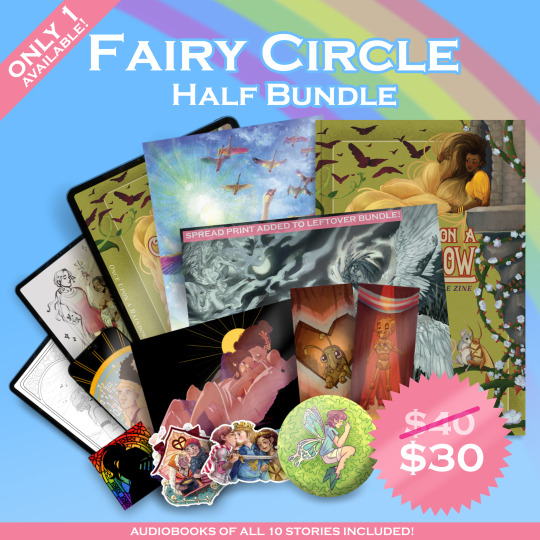



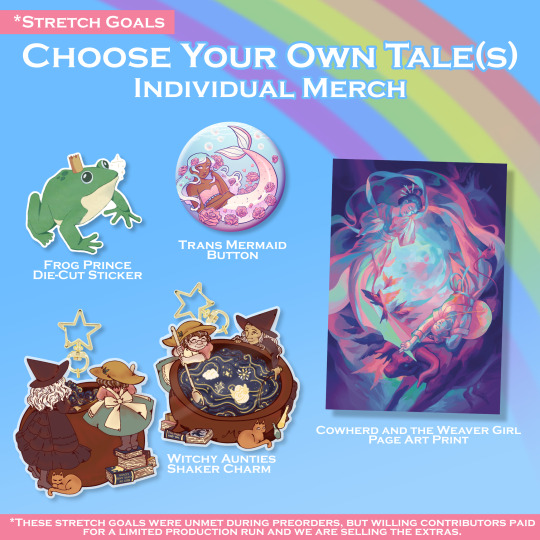
16 notes
·
View notes
Text

2024 reads / storygraph
Everything Under the Moon
Anthology of queer reimaginings of fairytales by mostly Australian authors
various genres, from contemporary to fantasy and sci-fi, mostly about older teens
mlm, sapphic, trans, nonbinary, demi, bi ace, and aromantic characters, some stories focusing on romance but many on familial relationships and siblings
#Everything Under the Moon#aroaessidhe 2024 reads#aromantic books#queer books#A really nice anthology of queer fairytales! definitely a mix of all sorts of stories.#Some were a bit forgettable (I mean I’m just not a short story person) but I really enjoyed others! I#I picked this up specifically because I heard there was an aromantic story (which I didn’t know much else about) and yeah it hit hard actua#it’s about being okay with loneliness and also centred around artists….so. it did make me cry a bit….#I liked that a lot of them focused on platonic r/ships - most on sibling actually? I appreciate that there were a couple sapphic aces too#I will say while the illustrations are really high quality (I especially liked the naturey ones) I found a lot of them depicted the chars#as very.....disnefied? idk. thin and generic. lacking 'imperfect' features like freckles even#(when they’re described as having them) With a couple exceptions for sure - but a lot of them were a bit samey#I would have loved some authors notes or a list of the stories because I didn’t recognise which all were inspired by#(though they’re on the endpapers; just not specified which) - I did find this in a GR review tho
38 notes
·
View notes